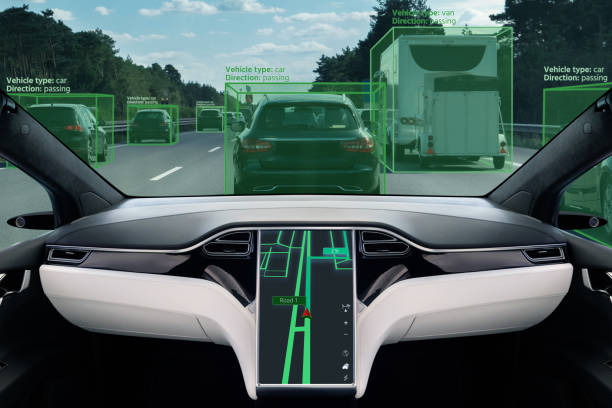Exploring the Hidden World of Automotive Radar Systems
The automotive landscape is undergoing a silent revolution, one that's invisible to the naked eye but crucial to the future of driving. Nestled behind sleek grilles and integrated into side mirrors, automotive radar systems are becoming the unsung heroes of modern vehicles. These sophisticated sensors are not just enhancing safety; they're paving the way for a new era of intelligent transportation. But what exactly are these systems, and how are they reshaping our driving experience?

The technology behind automotive radar has its roots in military applications, where it was used to detect aircraft and ships. However, the transition to civilian use has been nothing short of revolutionary. Today’s automotive radar systems are compact, cost-effective, and capable of processing vast amounts of data in real-time, making them indispensable for advanced driver assistance systems (ADAS) and laying the groundwork for fully autonomous vehicles.
From Safety Net to Proactive Guardian
The primary function of automotive radar systems has traditionally been collision avoidance. By constantly monitoring the vehicle’s surroundings, these systems can detect potential hazards and alert the driver or even take action to prevent accidents. This includes features like automatic emergency braking, which can bring a vehicle to a stop if an imminent collision is detected.
However, the role of radar in vehicles is expanding far beyond simple collision avoidance. Modern systems are becoming increasingly sophisticated, enabling features like adaptive cruise control, which can automatically adjust the vehicle’s speed to maintain a safe distance from the car ahead. This not only enhances safety but also reduces driver fatigue on long journeys.
Moreover, radar systems are now being used in conjunction with other sensors to create a comprehensive view of the vehicle’s environment. This fusion of data from radar, cameras, and lidar (light detection and ranging) sensors is creating a more robust and reliable sensing system, capable of handling complex driving scenarios with greater accuracy.
The Invisible Traffic Conductor
One of the most exciting applications of automotive radar technology is in traffic management. By equipping vehicles with radar systems that can communicate with each other and with infrastructure, we’re moving towards a future where traffic flow can be optimized in real-time.
Imagine a scenario where your car’s radar system detects a slowdown ahead and communicates this information to vehicles behind you, allowing them to adjust their speed before they even see the congestion. This vehicle-to-vehicle (V2V) communication has the potential to dramatically reduce traffic jams and improve overall road efficiency.
Furthermore, radar-equipped vehicles can interact with smart traffic signals, optimizing the flow of traffic through intersections. This vehicle-to-infrastructure (V2I) communication could lead to smoother traffic flow in urban areas, reducing emissions and improving commute times.
Overcoming Challenges and Pushing Boundaries
Despite its many advantages, automotive radar technology faces several challenges. One of the primary concerns is interference. As more vehicles equipped with radar systems hit the roads, there’s an increasing risk of radar signals interfering with each other, potentially leading to false readings or reduced effectiveness.
To address this, researchers are developing more advanced signal processing algorithms and exploring new frequency bands. Some companies are even experimenting with quantum radar technology, which promises to be more resistant to interference and potentially capable of detecting objects with greater precision.
Another area of focus is improving the resolution of radar systems. While current automotive radar can detect objects and determine their distance and speed, it struggles with fine details. Enhancing resolution could allow radar systems to identify the type of object detected, distinguishing between a pedestrian, a cyclist, or another vehicle with greater accuracy.
The Road Ahead: Integration and Innovation
As we look to the future, the integration of radar technology with other vehicle systems holds immense promise. For instance, combining radar data with high-definition maps and GPS could enable predictive driving assistance, where vehicles anticipate and prepare for upcoming road conditions or traffic situations.
Moreover, the advent of 5G networks opens up new possibilities for radar systems. The high-speed, low-latency communication offered by 5G could enable real-time sharing of radar data between vehicles and infrastructure, creating a cooperative sensing network that enhances safety and efficiency for all road users.
The development of radar systems is also pushing the boundaries of automotive design. As these systems become more critical to vehicle functionality, manufacturers are finding innovative ways to integrate radar sensors without compromising aesthetics or aerodynamics. This has led to the development of new materials and manufacturing techniques that allow radar waves to pass through seemingly solid surfaces, maintaining the sleek lines of modern vehicles while hiding sophisticated sensing equipment.
In conclusion, automotive radar systems represent a fascinating intersection of cutting-edge technology and practical application. As these systems continue to evolve, they promise to transform not just individual vehicles, but the entire transportation ecosystem. From enhancing safety and efficiency to enabling new forms of vehicle-to-vehicle and vehicle-to-infrastructure communication, radar technology is silently shaping the future of mobility. As we journey into this new era of intelligent transportation, the invisible waves of automotive radar will be guiding us every step of the way, making our roads safer, smarter, and more connected than ever before.





